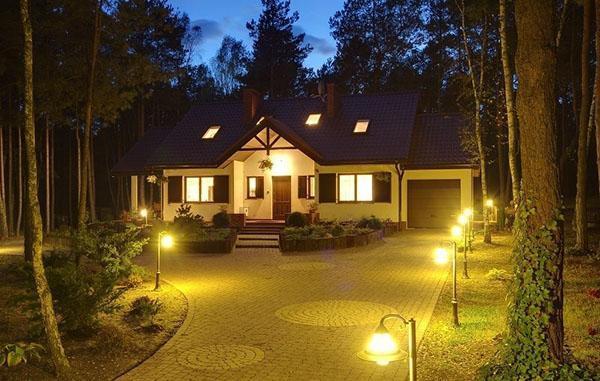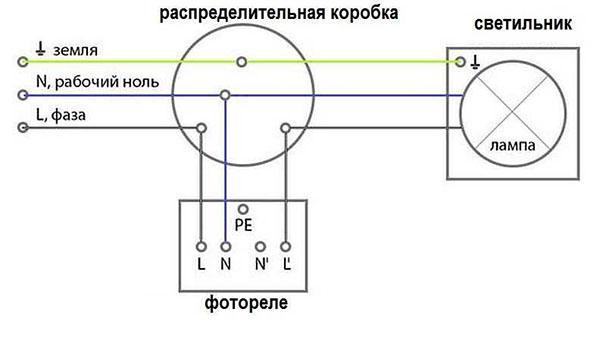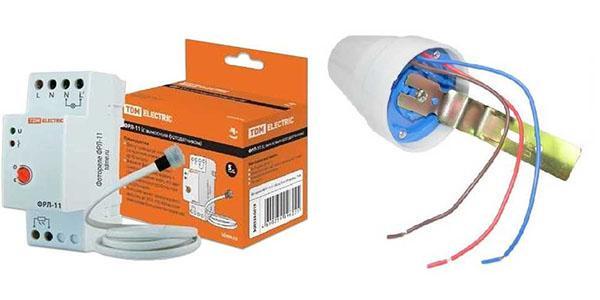Self-assembly of photo relay for street lighting
 Each owner of a private house tries to make it as comfortable as possible for himself and his family members. Many people are concerned about the question of how to automate the external lighting of a home so that the lamps themselves light up at dusk and go out at sunrise. The most popular solution is usually the use of a photo relay for day-night street lighting.
Each owner of a private house tries to make it as comfortable as possible for himself and his family members. Many people are concerned about the question of how to automate the external lighting of a home so that the lamps themselves light up at dusk and go out at sunrise. The most popular solution is usually the use of a photo relay for day-night street lighting.
Also, sometimes an astrotimer acts as an alternative. However, due to the high cost, this device is used extremely rarely, although it has its own advantages.
The principle of operation of the street light sensor

The main part of the device is a photosensitive element. Depending on the features of the circuit diagram, it can be a photoresistor, phototransistor, or photodiode. Under the influence of light, the working surface of the part does not allow the relay contacts to close. When the illumination decreases, the photocell supplies electricity to the relay coil and the electrical circuit is closed.
At dawn, the process is reversed. As the intensity of sunlight increases, the photo relay circuit for street lighting breaks the circuit at a certain point and the lamp goes out.
Device types
 Before buying, you should definitely determine the type of device. The device can be made in a one-piece housing with a built-in sensitive element, or with a remote sensor. The advantage of the latter is that the sensor can be placed in almost any convenient place. And fix the body of the device in the electrical panel. There are models with the possibility of fixing on a DIN rail.
Before buying, you should definitely determine the type of device. The device can be made in a one-piece housing with a built-in sensitive element, or with a remote sensor. The advantage of the latter is that the sensor can be placed in almost any convenient place. And fix the body of the device in the electrical panel. There are models with the possibility of fixing on a DIN rail.
A day / night sensor for switching on the light in a one-piece housing is located outdoors in the open air. Usually the fixture is located in close proximity to the light source itself.
If the relay is installed near a lighting lamp, the device should be fixed in such a way that the light rays from it do not affect the operation of the photosensitive sensor.
Performance parameters
 Having decided in what version the sensor should be, it is important to pay attention to the technical parameters.
Having decided in what version the sensor should be, it is important to pay attention to the technical parameters.
- Working voltage. The circuit can be powered from a common 220 V AC mains, or through a separate 12 V power supply or battery. The method of powering the sensor is usually the same as that from which all lighting lamps are powered.
- Temperature limits. It should be borne in mind that the device must work flawlessly at any ambient temperature. Therefore, when purchasing a photo relay for street lighting, you should pay attention to the fact that the device has a sufficient operating temperature range for a particular region. It is advisable to take into account the possibility of an abnormally hot summer or an extremely cold winter.
- Protection class. For outdoor installation, select models with a protection class of at least IP 44. Dust particles larger than 1 mm, as well as water splashes, cannot enter the body of such a device. You can choose a higher class for better reliability.
- Power. A very important parameter of any electrical equipment is its power.When choosing a day-night relay for a street lamp, you should take into account how many watts are consumed in total by all lamps switched on by the sensor. For a long service life, it is desirable that the maximum permitted power of the device is 20% higher than the total power of all lamps operating through it.
Photo relay setting
 For correct operation, the photo relay for street lighting can be adjusted according to several parameters. Nevertheless, it should be borne in mind that when using several sensors, it will not be possible to achieve absolute synchronization of their response. There will always be minimal differences in performance.
For correct operation, the photo relay for street lighting can be adjusted according to several parameters. Nevertheless, it should be borne in mind that when using several sensors, it will not be possible to achieve absolute synchronization of their response. There will always be minimal differences in performance.
- Response threshold. Setting this parameter allows you to adjust the sensitivity of the device. In winter, when a large amount of light is reflected from the snow, the sensitivity should be reduced, and in summer, on the contrary, increased. It is also necessary to reduce this parameter if the housing is located next to brightly lit objects in a large city.
- Delay on / off. By increasing the shutdown delay, you can reduce the likelihood of false alarms when the light beam from the headlights of passing vehicles hits the light sensor. And the turn-on delay will not allow the relay contacts to close if the sun is hidden behind the clouds.
- Illumination range correction. With this adjustment it is possible to select the light level at which the street light sensor will switch the load on and off. The range may be within different limits, but it is better to purchase a device with the widest possible 2-100 Lx.
Selecting a place for mounting a photo sensor
 For the correct operation of the device, it is important to choose the right place in which it will be fixed.
For the correct operation of the device, it is important to choose the right place in which it will be fixed.
It is most important to position the sensor in such a way that it is exposed to the sky and the sun's rays reach its surface unhindered. It is also worth choosing an attachment point that does not fall under the headlights of passing cars. When installing a photo relay for street lighting, it should be borne in mind that light from windows from all kinds of artificial light sources should not fall on its surface.
For ease of maintenance, it is advisable not to position the fixture too much. From time to time from the surface of the device you will have to wash off the dust and shake off the snow.
It can be difficult to find the attachment point the first time. It is often necessary to move the sensor from one place to another several times to select the most optimal location.
Methods for connecting a photo relay
 In general, it is quite easy to connect an outdoor light sensor to turn on the light. Phase and zero are supplied to the device, and the phase from the output goes to the lamp contact - the other contact is connected to zero. Installation of the device takes place in the open air. All wire connections must be in a special sealed junction box.
In general, it is quite easy to connect an outdoor light sensor to turn on the light. Phase and zero are supplied to the device, and the phase from the output goes to the lamp contact - the other contact is connected to zero. Installation of the device takes place in the open air. All wire connections must be in a special sealed junction box.
If you need to power a powerful searchlight, then it is better to additionally use an electromagnetic starter, which is capable of operating with high amperage.
The only difference is that instead of a lamp, a starter coil is connected to the photo relay. Closed contacts serve as a switch for the lighting fixture.
Sometimes it is required that the lights turn on at night only if someone is nearby. In this case, the electrical circuit should be supplemented with a motion sensor.
 Regardless of the manufacturer, all models of photo relay for street lighting have three wires:
Regardless of the manufacturer, all models of photo relay for street lighting have three wires:
- red - phase for connecting the load;
- blue or green - neutral wire;
- black or brown - phase supplying circuit.
In conclusion, it is worth noting that connecting a day-night sensor does not require deep knowledge of electrical engineering. Absolutely everyone can handle this work.